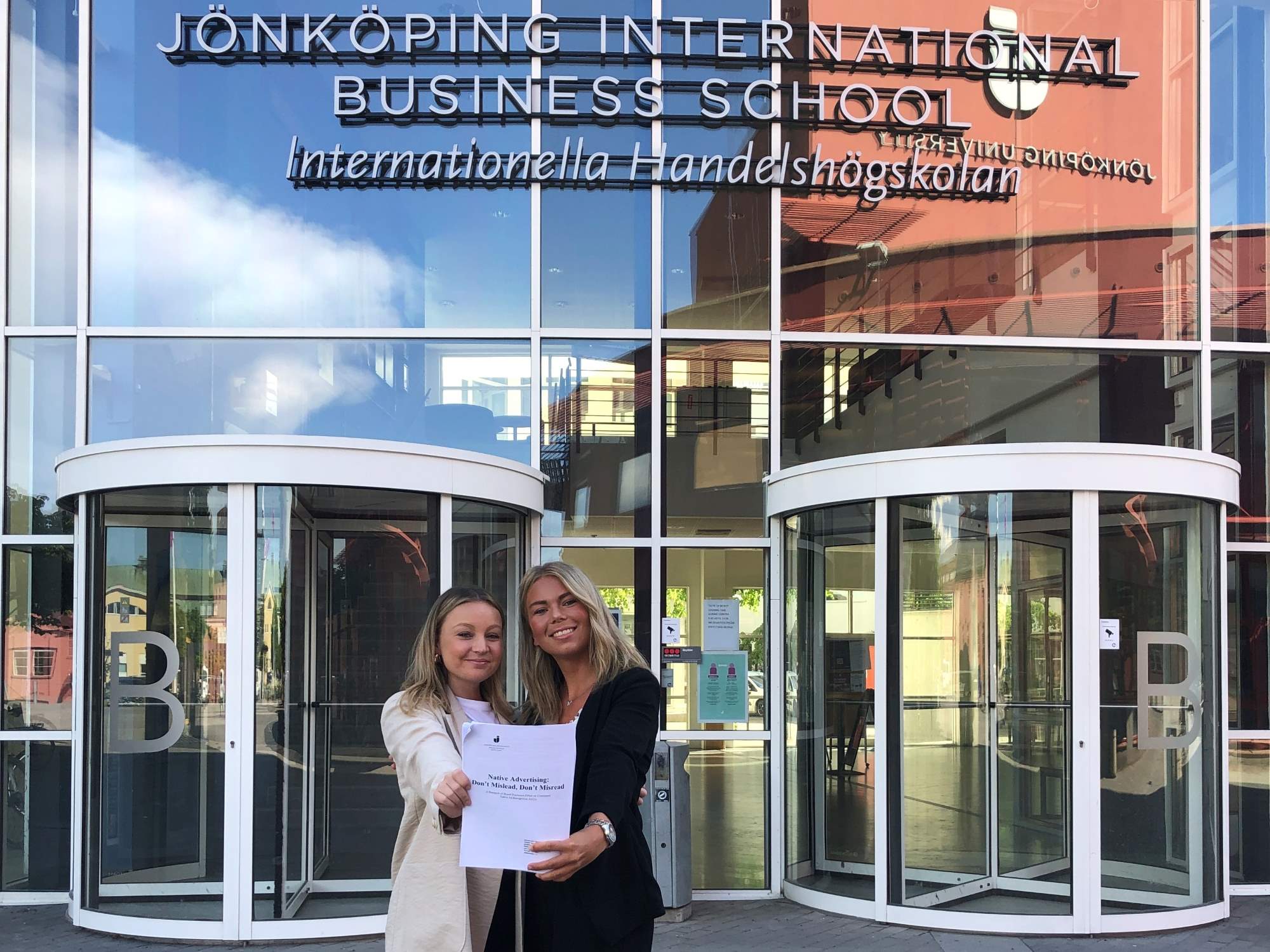Detecting ads embedded in native content
2020-11-13

Project details
Summary of the study
The rise of online marketing and advertising in recent decades has brought about the development of methods aimed at reducing consumers' ability to recognize marketing content. One such method is native advertising, which seamlessly integrates the design and functionality of the platform on which it appears, making the advertisement feel less disturbing. This strategy can impair the audience's ability to identify the content as paid advertising. The aim of our essay was to explore whether native advertising from well-known brands influences consumers' ability to recognize articles as advertisements.
To address our research question, we conducted an eye-tracking experiment in which we tested three different ways of presenting the brand. Two versions of the test were developed to compare whether the outcomes varied between the test groups. The experimental group was exposed to prominently displayed brand elements in the native advertisements, while the control group had minimal brand exposure. The results from the eye-tracking experiment were complemented with a questionnaire that assessed participants' experiences and their ability to recognize the content as advertising. These findings were then compared and analysed.

Julia Fagerström and Elin Hultin, satisfied after having the essay opposition completed.
The students' experiences of the survey
How the eye tracking was done
The experiment was designed to investigate the extent to which consumers identify native advertising depending on how the brand is presented. The tests were designed on a news platform created by us where the brands were exposed in either the title of an article, embedded in the body text or by including the company's logo in the form of an image associated with the article. The eye tracking-equipment was used to measure the consumers' recognition ability in real time, and we could use this to ensure that the results were not influenced by the test subjects' memory or previous perceptions about paid advertising.
The analysis showed that the people belonging to the test group who were exposed to clearly presented brands also had an easier time identifying native advertising and thus the intention of the article. The result was the same regardless of the design of the brand. The result demonstrates the importance of clearly formulated regulations around native advertising to avoid consumers being misled and feeling cheated.
The benefit of eye tracking
The biggest advantage eye tracking brought to our paper was that we had the opportunity to examine the test subjects' reactions in real time. Previous studies in the subject have often been shown to focus on feelings and opinions about the experience after being exposed to native advertising. These have therefore rarely been able to answer what can affect the ability to recognize. Not even if a low degree of recognition is due to being "fooled" by the ad, or simply not even paying attention to the content. With the eye tracking-technique, we were able to get answers from another dimension, namely the participants' focal points, attention and presence at the exact moment which could then be supplemented with the answers from a questionnaire related to the test. By using eye tracking, we were also able to get data that was completely unbiased and unaffected by external influences or emotions, which is a big advantage in essay writing in general.
Respondents
We promoted our project via the school's portals and in various groups with students at the university. Students then had to register their interest with us via a link or by contacting us personally. Even though covid-19 complicated the process because distance studies were introduced and fewer students had the opportunity to stay at the school, we were still pleasantly surprised by the number of interested people who wanted to participate. We ended up testing 60 people, and with hindsight, that number could probably have been significantly higher under normal circumstances. The response of the participants was also very positive. As eye tracking is not something everyone has experience with, it created an interest and curiosity about participating.
Prize-winning essay
With the justification that we implemented new methods to use in our degree work, at the end of the semester and our bachelor's degree, we received a prize for the most innovative essay. Something we were obviously very happy and proud of!
We are also very grateful that we had the opportunity to use and familiarize ourselves with eye tracking. It will be an experience we will take with us in our future working life as it is a technique that is well adapted to analysing different types of marketing in today's society.
Elin Hultin and Julia Fagerström

